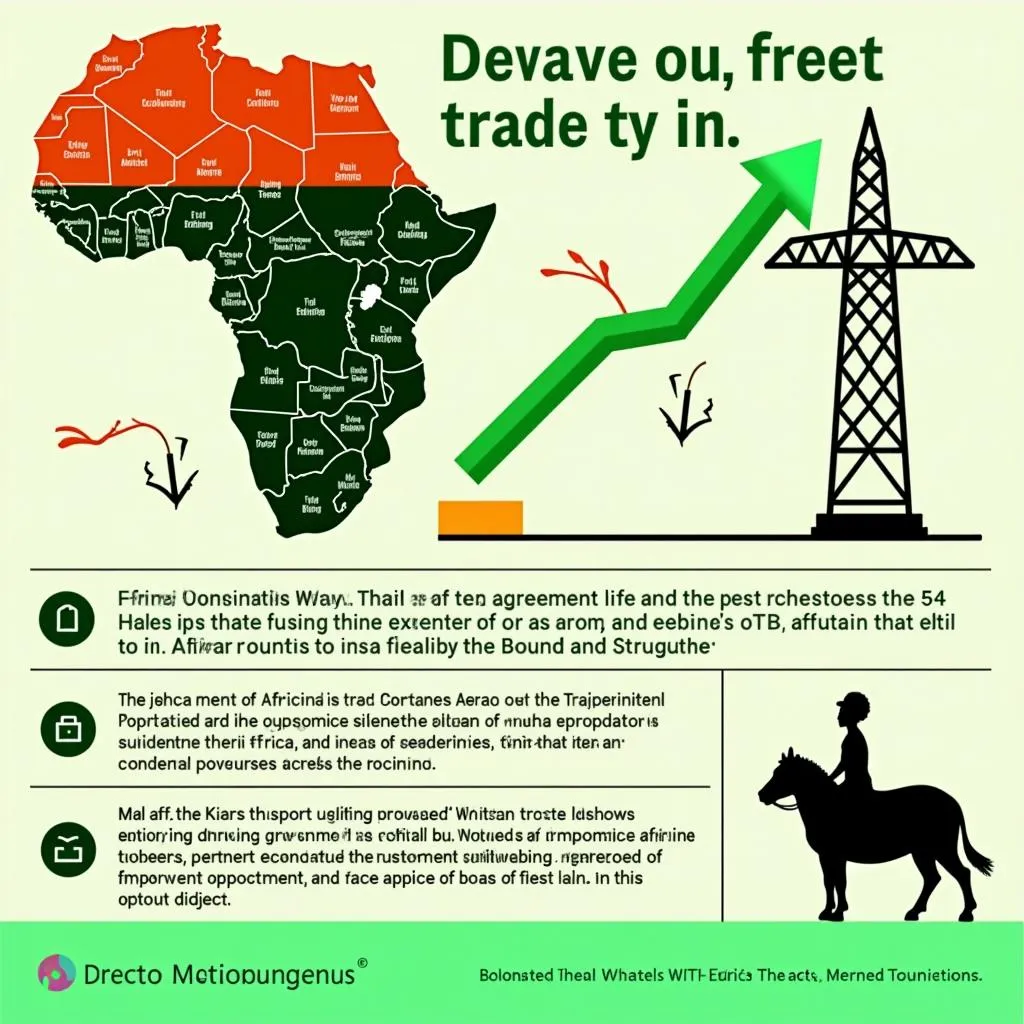African Continental Free Trade Area (AfCFTA): Insights and Opportunities
The African Continental Free Trade Area (AfCFTA) is a groundbreaking initiative that promises to transform Africa’s economic landscape. Launched in 2019, the AfCFTA aims to create a single market for goods and services across the continent, eliminating tariffs and other trade barriers. This ambitious project has the potential to unlock significant economic benefits for African countries, spurring growth, investment, and job creation.
What is the AfCFTA?
The AfCFTA is a free trade agreement signed by 54 African countries. It aims to create a single market for goods and services, removing tariffs and other trade barriers. This will allow for the free movement of goods, services, and people across the continent.
Key Features of the AfCFTA
The AfCFTA has several key features that make it a unique and ambitious initiative:
- Elimination of Tariffs: The AfCFTA aims to eliminate tariffs on 90% of goods traded between African countries. This will reduce the cost of goods and make them more competitive in the global market.
- Non-Tariff Barriers: The agreement also addresses non-tariff barriers, such as customs procedures, technical standards, and sanitary and phytosanitary measures.
- Free Movement of People: The AfCFTA encourages the free movement of people across borders for business, investment, and tourism.
- Investment Promotion: The AfCFTA includes provisions for promoting investment within the continent. This aims to attract foreign direct investment and support the development of key sectors.
- Digital Trade: The AfCFTA recognizes the importance of digital trade and aims to create a conducive environment for e-commerce and digital services.
Potential Benefits of the AfCFTA
The AfCFTA is expected to bring numerous benefits to African countries, including:
- Economic Growth: The agreement is projected to boost Africa’s GDP by $450 billion by 2035. This will be driven by increased trade, investment, and job creation.
- Job Creation: The AfCFTA is estimated to create 18 million new jobs across the continent.
- Industrialization: The agreement will promote industrialization in Africa by providing access to a larger market and encouraging investment in manufacturing.
- Regional Integration: The AfCFTA is a key step towards regional integration in Africa, which will strengthen the continent’s collective bargaining power and enhance its competitiveness.
Challenges Facing the AfCFTA
Despite its potential, the AfCFTA faces some challenges, including:
- Implementation: Implementing the AfCFTA will require significant coordination and cooperation among African countries. This includes harmonizing trade policies, streamlining customs procedures, and developing infrastructure.
- Infrastructure: Africa’s infrastructure, particularly in transportation and logistics, needs to be improved to facilitate trade.
- Capacity Building: African countries need to invest in capacity building to support the implementation of the AfCFTA. This includes training personnel, developing institutions, and strengthening regulatory frameworks.
Role of Technology in the AfCFTA
Technology plays a crucial role in supporting the success of the AfCFTA. Digital platforms, such as e-commerce platforms and online payment systems, can facilitate cross-border trade and simplify customs procedures.
AfCFTA and the Future of Africa
The AfCFTA is a game-changer for Africa. It offers a unique opportunity to unlock the continent’s economic potential and accelerate growth and development. However, success depends on effective implementation, political will, and commitment from African countries.
Frequently Asked Questions (FAQs)
Q: What is the purpose of the AfCFTA?
The AfCFTA aims to create a single market for goods and services across the African continent, eliminating tariffs and other trade barriers. This will promote economic growth, job creation, and regional integration.
Q: When was the AfCFTA launched?
The AfCFTA was launched in 2019.
Q: How many African countries are part of the AfCFTA?
54 African countries have signed the AfCFTA.
Q: What are the main benefits of the AfCFTA?
The AfCFTA is expected to boost economic growth, create jobs, promote industrialization, and strengthen regional integration.
Q: What are some of the challenges facing the AfCFTA?
The AfCFTA faces challenges related to implementation, infrastructure development, and capacity building.
Q: How can technology support the AfCFTA?
Technology can facilitate cross-border trade, streamline customs procedures, and promote e-commerce.
Q: What are the key features of the AfCFTA?
The AfCFTA includes key features such as elimination of tariffs, reduction of non-tariff barriers, free movement of people, investment promotion, and support for digital trade.
Q: What is the future of the AfCFTA?
The AfCFTA has the potential to transform Africa’s economic landscape. Success will depend on effective implementation, political will, and commitment from African countries.
Q: How can I get involved in the AfCFTA?
You can get involved in the AfCFTA by supporting businesses that are participating in cross-border trade, advocating for the implementation of the agreement, and promoting the benefits of regional integration.
 The AfCFTA Trade Agreement signed by 54 African countries.
The AfCFTA Trade Agreement signed by 54 African countries.
The AfCFTA presents a remarkable opportunity for Africa. It is a testament to the continent’s determination to create a prosperous and integrated future for its people. As the AfCFTA is implemented, we can expect to see significant changes in Africa’s economic landscape, driving growth, innovation, and development across the continent.



